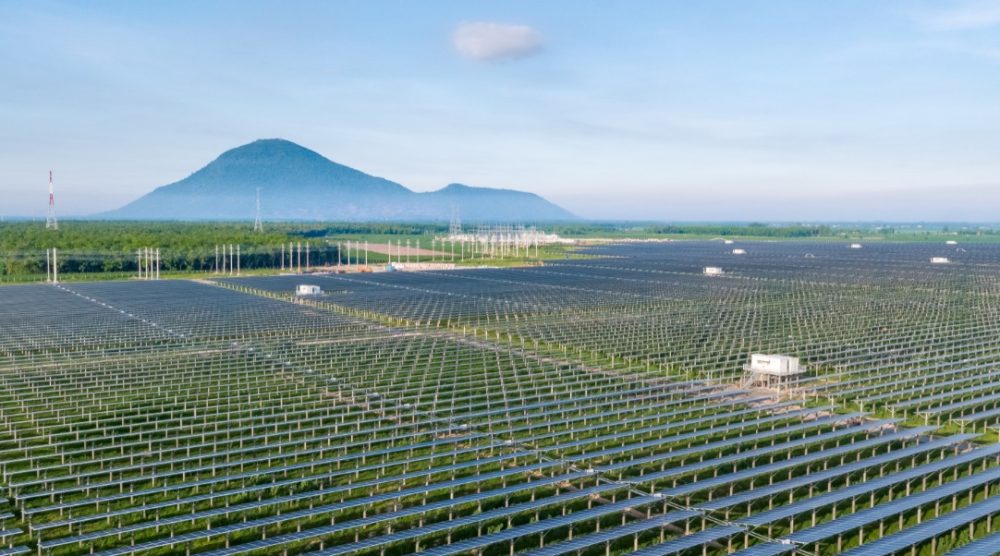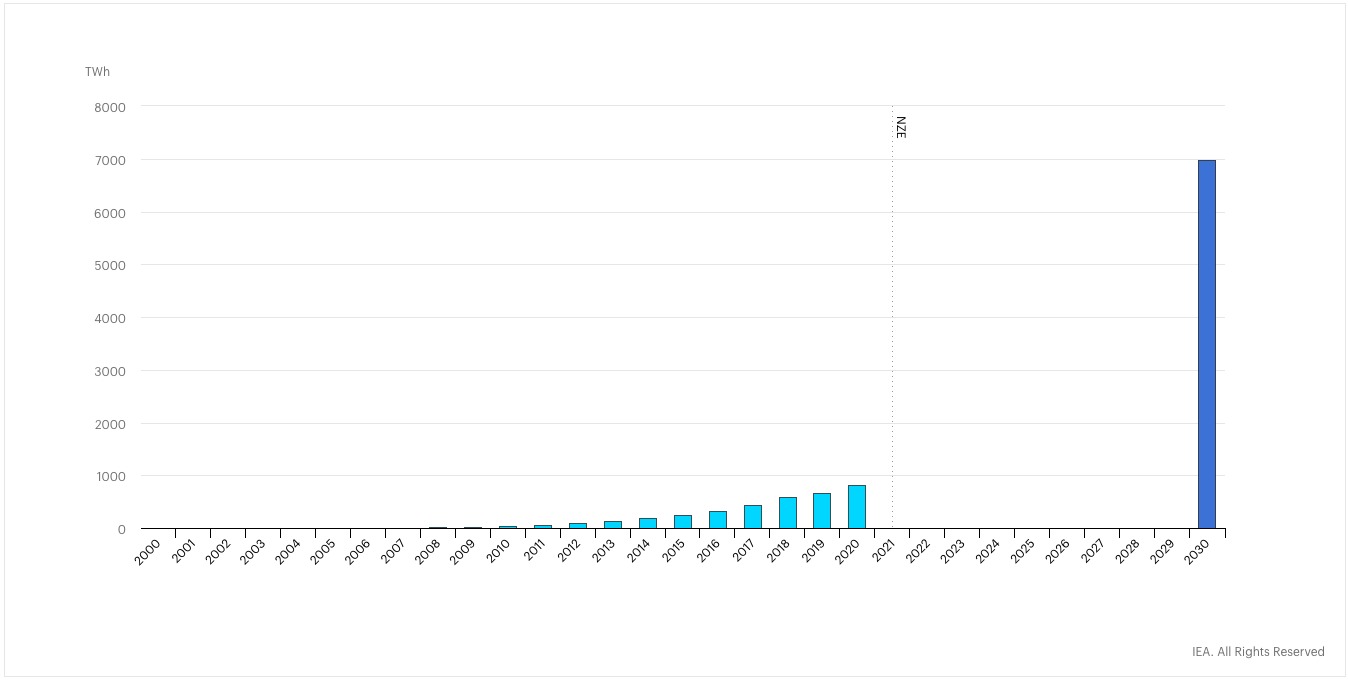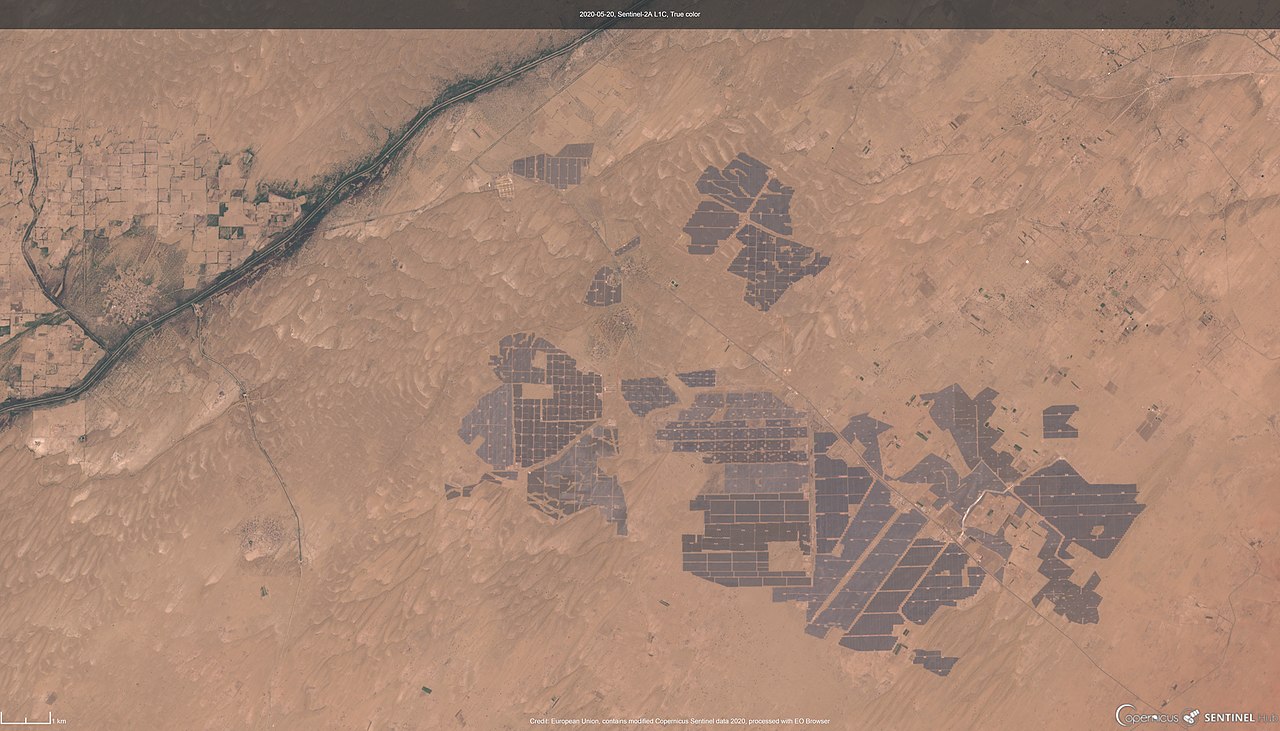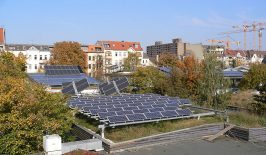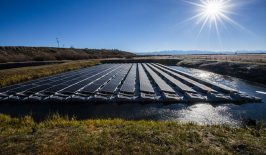The sun has clearly fulfilled an incredibly central role to human civilisations, either in terms of agriculture, religious worship or just plain warmth. However, in recent decades it has also become one the most important sources of renewable energy. In theory, you could argue we have been harnessing the power of the sun for much longer than that. As early as the 7th century BC, humans likely used the sun to light fires, while by the 3rd century BC some Greek temples featured special mirrors which could be used to light ceremonial torches.
Fast forward to the late 1800s, and the sun is now being recognised as a potential source of newly discovered electricity. In the 1870s, it was discovered that selenium – a mining byproduct – displayed photovoltaic (PV) properties and could be used to generate electricity. But, it was not until the 1950s that solar power as we know it emerged. In 1953, Bell Labs produced the first silicon-based PV panels – which were able to produce electricity at around a four percent efficiency.
However, the late 20th century was still the era of fossil fuels, and solar power was only really utilised in situations where these were impractical – like space. In the late 50s and 60s, PV panels became familiar sights on satellites and spacecraft such as Vanguard 2, Explorer 3 and Sputnik-3.
The 1970s and 80 would see further experimentation with solar panels, including the first solar powered plane, increases in efficiency and installation on the White House. The panels were later removed by Reagan, only to be reinstalled again under Obama.
Where is Solar Today?
Today, solar power is the third largest source of renewable energy after hydropower and wind. Overall, it provides around 3.1 percent of global power needs. However, it is also one of the power sources which has seen the strongest growth across the world with impressive year-on-year statistics.
In 2010, 32.2 terawatt hours were produced globally by solar panel. By 2020, that figure had increased to 821 TWh. In 2020 alone, solar power generation grew by 156 TWh, a record breaking 23 percent increase. This boom was largely thanks to a continuing drop in the cost of solar power and huge investment in China, the US and Vietnam. China alone was responsible for 75 percent of new solar power from 2019-2020, as well as large increases in wind power. In the US, solar power increased 45 percent in 2020.
But overall, solar power is still lagging far behind its net zero goals. To achieve the International Energy Agency’s Net Zero by 2050 goal, solar power would have to produce around 8000 TWh by 2030. This would require an annual increase of 24 percent throughout the next decade. Although recent statistics might suggest we are on our way to this target, the reality is a bit more complex.
Much like the boost in wind, solar’s recent boom may be short lived. The impressive statistics are largely due to the expiration of Chinese feed-in tariff schemes designed to incentivise renewable developments. Developers rushed to finish their projects by 2020, with similar US schemes also ending in 2022. The large growth is also partly due to the low starting point for solar energy. As the sector expands it will likely become harder to consistently maintain this momentum.
Nonetheless, the IEA expects solar to continue to expand in the future, and become one of the leading technologies in creating a more renewable future, especially with the increasing cost of other sources. Their 2021 renewable report lays out their expectations:
“In our main case forecast for 2021-2026, we expect annual average renewable capacity additions to reach 305 GW, 58% higher than the figure for the last five years. Despite surging commodity prices increasingly affecting solar PV investment costs, we expect the annual market to grow by 17% year-on-year to almost 160 GW in 2021 with additions reaching almost 200 GW in 2026. In the significant majority of countries worldwide, utility-scale solar PV provides the lowest cost of adding new electricity capacity, especially in the context of increasing natural gas prices.”
The Challenges of Solar Power
Although the cost of solar technology has dropped considerably (around 80 percent since 2010), there are other long standing challenges facing the solar sector. Overcoming some of these challenges will be essential to taking solar forward into the next decades.
One of the most important issues is the efficiency of solar panels. Although their efficiency has greatly improved in recent decades, they are still far from optimal. Modern consumer solar panels only operate at around 17 to 19 percent efficiency, meaning much of the solar energy that hits them goes to waste. Although this level of efficiency is still high enough for solar to work as a viable power source, it places limitations upon the sector in terms of cost, space required and return of investment.
Solar energy would have to more than double its efficiency before it can start to match its rivals, both renewable and fossil. Wind turbines operate at around 20 to 40 percent efficiency, while some coal plants can run at 59 percent efficiency. Nuclear energy is far out in the front at around 91 percent. For energy suppliers looking to make a profit, these figures matter.
Then, of course, there is the issue which hounds many forms of renewable energy: its intermittent nature. When the sun’s not shining, or clouds are in the way, solar power is significantly hindered. This means only certain areas of the world will be suitable for large scale solar developments. This greatly limits the uptake of solar, especially on an individual residential level. Even then, solar panels can only generate power for roughly 12 hours a day, meaning they are unreliable for sustaining large communities. Difficulties in storing renewable energy means power is often fed into the grid immediately, resulting in solar providing too little or too much power at different parts of the year, season and even day.
Given solar’s low efficiency and varying intensity, building solar farms on a large scale is often the solution. Many of the world’s solar largest farms, such as the the Bhadla solar plant in India, are spread over thousands of hectares. Finding suitable space, especially for smaller nations, is therefore a constant problem. Recently, agrovoltiacs – combining agriculture and solar power generation – has become a potential solution, however studies have shown this is still far from perfect. Agrovoltaic farms will likely produce both food and electricity at a reduced and inefficient rate.
These issues also develop into ecological concern. Large scale solar parks can destroy local environments and lead to further degradation. Some solar PVs also use hazardous materials in their production, such as hydrochloric acid, sulfuric acid, nitric acid, hydrogen fluoride and gallium arsenide. These dangerous chemicals can be released from the panels when damaged or disposed of, necessitating care and regulation.
But solar does have some big advantages compared to other power sources. Although their efficiency may be low, solar panels are relatively reliable from a maintenance and upkeep perspective. Compared to wind turbines, solar panels can withstand harsh weather conditions, and if a panel is damaged, only part of the overall generation is affected, not the entire facility. This means solar is surprisingly robust compared to even fossil fuels. Solar also has low water requirements, making it ideal for desert and drought conditions. Furthermore, although solar parks take up a lot of space, they require little additional land in relation to infrastructure, mining or logistics.
A New Dawn of Solar Power?
Naturally, Attempts are being made to overcome these challenges. On the matter of efficiency, more efficient solar panels do exist, but they are usually prohibitively expensive. Reducing the cost of these more expensive panels, or replicating their features in other ways, may go some way to increasing the overall efficiency of consumer PVs. As Professor Andreas Bett, Director of the Fraunhofer Institute for Solar Energy Systems ISE, told The Smarter Europe, the answer is in further research and development:
“In the industry, we have achieved an average annual increase in efficiency of 0.5–0.6 % at the cell level over the past ten years. That’s nothing short of impressive.
Back at the turn of the millennium, aluminum back surface field solar cells were the industry standard. The efficiency level ultimately peaked at 20 % before the industry found itself faced with structural limitations. There was simply no way of further improving the efficiency with that cell architecture, so new technology was the only answer.”
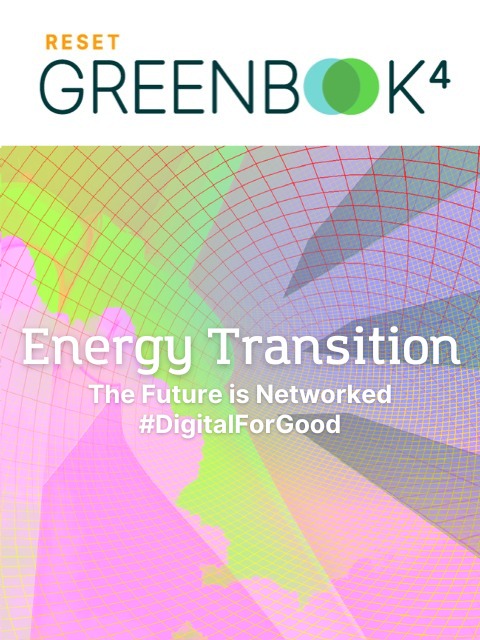
The 1.5 degree target is unattainable without a real transformation of our energy system. But how can it succeed? What are the energy sources of the future? What digital solutions are ready and where are innovations needed? And how can the transformation be driven forward?
The RESET Greenbook “Energy Transition – The Future is Networked” presents digital, innovative solutions and sheds light on the background.
Furthermore, the traditional single material silicon-wafer approach to solar power is also reaching its theoretical maximum in terms of efficiency – known as the Shockley-Queisser limit. As a result other materials and methods are being explored. One of these is perovskites – extremely thin films of crystal-like structures that are more efficient than silicon PVs in low light and cloudy environments. One huge added advantage of perovskites is they are cheap to produce, can be printed on a large scale and are flexible enough to coat a range of objects, from buildings to cars and even clothes. Professor Bett explains their potential:
“Perovskite crystals have been identified as an effective material for solar cells over the past five or six years. And the rapid research behind them has delivered significant increases in efficiency. If perovskite crystals or layers are used – even without a silicon base layer – an efficiency rating of 25 percent can already be achieved.”
Perovskites can also be added to traditional silicon panels as an extra electricity generation layer. When materials are combined, a hybrid-solar panel can break through the Shockley-Queisser limit.
Other methods involve concentrating the power of the sun into smaller areas to increase its intensity and the power generated. Such methods have previously been used in space where weight and maintenance is less of an issue, but now they are being brought down to Earth. For example, one Swiss startup, Insolight, has developed a panel including specially formed glass balls in a honeycomb structure. These act to concentrate the solar energy up to 200 times, pushing efficiency up to 29 percent.
Another method takes inspiration from nature. SunBOT is a UCLA project which has developed small solar panels which can move on a nanopolymer stem which expands and contracts throughout the day. Just like the photosynthetic processes within plants, this allows the small solar panels on top to track the sun. Whereas traditional panels only receive around 24 percent of the sun’s rays, the SunBOT can boost this to 90.
But technology is not limited to advances in efficiency. Other recent breakthroughs are exploring new ways, and places, to produce solar energy. For example, projects such as Village Data Analytics use satellites and machine learning algorithms to map out rural African villages in preparation for solar electrification. By identifying off-the-grid communities and infrastructure, they can direct solar developers to the areas which would benefit most. Elsewhere, satellites and AI have also been used to accurately count the number of current solar panels across the globe, and plan out future expansion.
With space becoming an issue, solar is also spreading elsewhere. For example, our seas, lakes and oceans provide potential opportunities and floating solar has been touted as an area of large-scale future expansion. One study suggested that if only 10 percent of the world’s hydroeletric resevoirs were covered in floating solar panels, around it would install nearly 4,000 GW of solar capacity. That’s the same as the electricity-generation capacity of all fossil-fuel plants in operation worldwide. Other approaches look to install solar capacity throughout cities via perovskite layers, solar powered vehicles and roads or solar panel bricks. Not only can this turn every street into a solar park, but can also power the future development of smart city infrastructure.
Other breakthroughs hope to extend the conditions in which solar power can function. Experimental panels have been developed which can generate power from the friction created from falling rain, or even when covered completely by snow. Developments such as this could potentially greatly extend the regions in which solar power can be viable. In fact, solar panels actually work best in colder and moist conditions.
As mentioned previously, agrovoltiacs have also been explored as a possible solution for building literal solar farms. Since farms are often in damp and moist conditions, they create a cooling micro-climate which can benefit solar panels. But of course, although a field covered in PV panels can produce electricity, it can produce little else.
Projects such as Tubesolar have developed tubular solar panels which can be positioned in lattices above existing crops. They allow air, water and sunlight to reach the plants below, while also protecting them from extreme weather. The TubeSolar team claim their panels generate electricity at the same rate as traditional panels and can even boost crop yields.
Additionally, self-repairing solar panels have been explored in order to reduce upkeep costs and prevent the leaching of dangerous hazardous chemicals.
Perhaps the most ambitious future solar panels hope to return solar power to its roots: space. Experiments, currently largely theoretical, are being carried out to examine how solar power can be captured in space and transported back for use on Earth. Currently, some concepts seem much more at home in the pages of science fiction than science journals. For example, the theoretical ‘dyson sphere’ imagines encasing stars in a mega-structure of orbiting solar panels to grab solar power closer to its source.
Much more likely is creating solar farms in Earth’s orbit – where solar radiation is much greater – and somehow beaming the power back to the surface. Both the US and China are looking at ways of doing just this. Currently the details of both projects are being kept under wraps, but it likely involves a combination of mirrors, swarming satellites, radiation dishes and huge receiving nets on the Earth’s surface – perhaps built in deserts and on oceans. However, although theorists suggest orbiting solar farms could produce up to 2000 gigawatts of power, there is still far to go. Experts suggest the technology is likely around 30 years away, and could cost many billions of dollars to produce.
But not all solutions need to be on such a grand scale. For example, at a local scale there is also a revolution in solar power. Community-based mini-grid developments, often supported by civic tech and digital tools, can help solar power become much more viable for everyday consumers. By pooling resources and sharing responsibility, home owners and neighbours can take matters into their own hands and assist one another in creating the next generation of clean solar energy.
